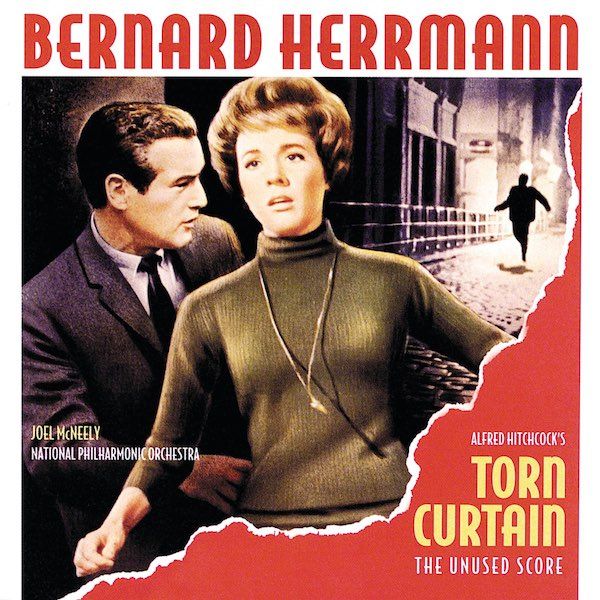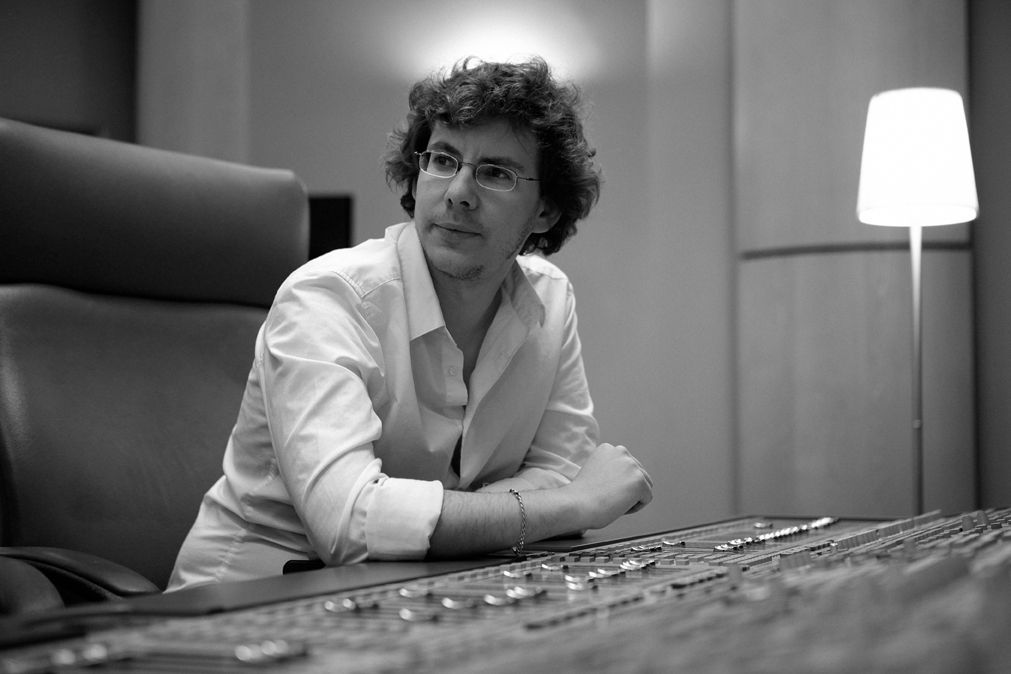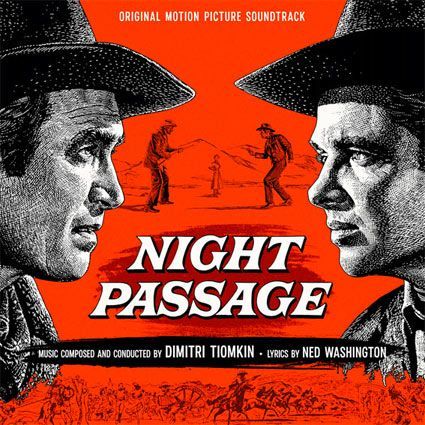Torn Curtain

Label: Varèse Sarabande
Catalogue No: VSD 5817
Release Date: 1998
Total Duration: 46:55
UPN: 0-3020-65817-2-0
The National Philharmonic Orchestra conducted by Joel McNeely
The James Bond movies of the 1960s reset the clocks for a genre already long-established. The Bond scores and the films themselves were glamorous affairs with a suave super-hero with initially a very black edge (Dr No is quite bleak) which became more colourful but less gripping as each film rolled out. All types of clones sprang up during the 1960s hey-day. James Coburn's Flint movies were fluffy and commercial and the Goldsmith scores were to match. On television The Man From Uncle series were in much the same Flinty territory. They were amusing and trendy.
TORN CURTAIN starred Paul Newman and Julie Andrews. It explores the spy genre but is closer to Ipcress than Bond. It is a grimly plotted affair. It did not do well at the box office. Its plot and characters failed to gel. It was the ninth and final collaboration between Herrmann and Hitchcock. The music marked a final rift between the two strongly defined and combative personalities. Hitchcock had requested a popular score with a strong main title and a memorable love theme. He did not get this from Herrmann. Hitchcock must have been infuriated because the music was so very different from what he had requested.
Herrmann wrote for a grand and idiosyncratic orchestra of sixteen French horns, twelve flutes, nine trombones, two tubas, two sets of timpani, eight cellos and eight basses. This accounts for the grey pastel shades. The score was a monochrome essay catching the Iron Curtain atmosphere. Hitchcock dropped the Herrmann score although many of the cues had, according to the Herrmann documentary which many may have seen on Channel 4 (UK), by then been recorded. The director then went to John Addison who provided Hitchcock with a better approximation of what he wanted. The break with Herrmann was complete. Herrmann is good at gloom (I wonder if he knew the music of Allan Pettersson) and he plays to this sinewy strength in this score. The variety comes largely from the ear-tickling textures which Herrmann creates. There is little of the slightly icy lyricism of the MARNIE score. The solo viola serenade Valse Lente (8) is a very subdued affair - a notch down from Ravel's Pavane pour une Infante Défunte. Track 24 (The Hill) is the only other cue which offers anything like a warmer glimpse of human emotions. The devilish and black-hearted Prelude is stormy with serpent tongues of flame licking around the nightmare scene. There is something here of NORTH BY NORTH-WEST but that score's dynamism is leavened with an innocence lacking in this film and this music. The Ship has an eerie charged calm. The Hotel is also eerie but it starts like some alien village dance. The Murder Scene (16) which Hitchcock decided would be played without music was in fact scored by both Addison and Herrmann. Herrmann's score climbs precipitous heights and the flutes flutter like a black cloud of birds. The often quiet music benefits from being played at a high volume. Track 29 returns to the stormy scenes of the Prelude with the brass punching out in thunderous style. I was struck several times by the use of a rocking horn figure which Bax wrote for Happy Forest but here it is used to darker effect. If it were rocking a cradle I would advise against looking at the contents of the crib!
This recording offers all of the Herrmann score with the exception of two sequences - and very brief ones at that - one runs to 21 seconds the other to 16 seconds. I am not sure why they were left out but it does pave the way for someone else, with the necessary permission, to offer a sequel to this disc at some time in the future - trumpeting an absolutely complete score. I am puzzled by the decision. After all some of the recorded sequences run to as little as 24 seconds (22) and the disc still has plenty of space.
I am indebted to Kevin Mulhall's excellent and fulsome notes and hope he will forgive me for occasionally plagiarising them. This is a fine product documenting some impressive music but without the slightly chilled heart and cold kindness we find in many Herrmann scores. I confess to being more in awe than in love with the piece. I welcome this recording as an important addition to the wonderful blossoming of the Herrmann sound library. It seems to be very faithfully served by the artists and the sound engineers. I have rated and recommend the recording in these terms. However as a score its almost unremitting gloom does not beckon return visits. Herrmann however was obviously enthralled by the style because his next score FAHRENHEIT 451 was in similar tones. This CD is for the Herrmann completist. Other more humane Herrmann scores are commended to the general listener and to those exploring Herrmann for the first time.
Originally published at MusicWeb International - Text reproduced by kind permission of Rob Barnett



